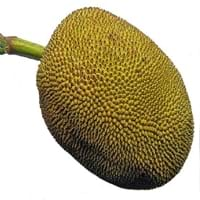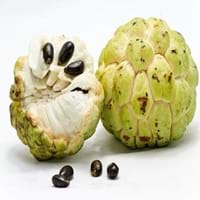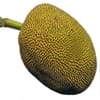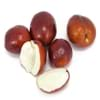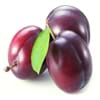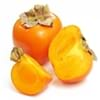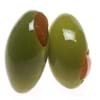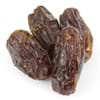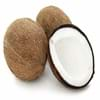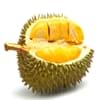Health Benefits
Cancer prevention, Heart care, Prevents constipation, Regulation of heart rate, Treatment of colonic diseases
Cancer prevention, Heart care, Regulation of heart rate
General Benefits
Controls blood pressure, Cures cough, Digestive aid, Flu treatment, Improves eye vision, Treatment of common cold
Anti oxidant properties, Anti-inflammatory properties, Boosts immune system, Controls blood pressure, Digestive aid, Strengthens bones
Skin Benefits
Brightens and lightens complexion, Reduces wrinkles
Reduces wrinkles, Skin rejuvenation
Hair Benefits
Promotes longer and healthier hair, Regulates hair growth
Promotes longer and healthier hair, Treatment of dandruff, Treatment of Lice
Allergy Symptoms
Abdominal cramps, Diarrhea, Skin Rashes, Swelling of mouth, tongue or lips, Vomiting
Anaphylaxis, Itching, Skin rash, Swelling of face
Side Effects
Allergic reaction, Coagulation
Allergic reaction, Possibly unsafe during pregnancy
Pregnant Women
Not Available
Yes
Best Time to Eat
Along with meal, As a snack in the late afternoon, Don't consume at night and before bed, Eat the fresh ones, avoid mixing with any other foods, don't eat after meal., Morning time (before lunch)
As a snack in the late afternoon, Don't consume at night and before bed, Morning time (before lunch)
Vitamin A (Retinol)
Not Available
Vitamin B5 (Pantothenic Acid)
Vitamin C (Ascorbic Acid)
Calories in Fresh Fruit with Peel
Not Available
Not Available
Calories in Fresh Fruit without Peel
Calories in Frozen Form
Not Available
Calories in Dried Form
Not Available
Calories in Canned Form
Not Available
Calories in Juice
Not Available
Calories in Jam
Not Available
Calories in Pie
Not Available
Type
Tree fruit, Tropical
Tropical
Season
Autumn, Monsoon, Summer
Autumn, Spring, Winter
Varieties
Black Gold, Cheena, Cochin, Dang Rasimi, Golden Nugget and Golden Pillow
Andrews, Amarilla, Asca, Baste, Bays, Bayott, Behl, Canaria, Capucha, Deliciosa, Ecuador, El Bumpo, Guayacuyán, Jete, Juniana, Knight, Nata, Popocay, Sander, Smoothey, Tumba, Umbonada, Whaley and White Juliana
Color
Dark green, Golden yellow, Green, Indigo, Magenta, Yellowish-orange
Green, Yellow
Inside Color
Yellow
White
Soil Type
Clay loam, Porous, Sandy, Well-drained
Sandy loam
Climatic Conditions
Humid, Warm
Warm
Facts about
- There are up to 500 seeds in Jackfruit & these seeds are edible.
- Root extracts of Jackfruit tree is used to treat diarrhea, fever and asthma.
- The taste of jackfruit is combination of mango, banana, melon and papaya.
- Cherimoya is also called as custard apple or chirimoya.
- The word cherimoya came from the Quechua word,'chirimuya',which means 'cold seeds'.
- The cherimoya is called as 'the tree of ice cream'.
Other Countries
Bangladesh, Indonesia, Nepal, Thailand
Argentina, Chile, Colombia, Egypt, Italy, Mexico, Peru, South Africa, United States of America
Top Importer
United States of America
United States of America
Botanical Name
Artocarpus heterophyllus
Annona cherimola
Synonym
Artocarpus heterophylla or Artocarpus integra or Artocarpus integrifolia
Not Available
Subkingdom
Tracheobionta
Tracheobionta
Division
Magnoliophyta
Magnoliophyta
Class
Magnoliopsida
Magnoliopsida
Subclass
Alismidae
Magnollidae
Order
Rosales
Magnoliales
Family
Moraceae
Annonaceae
Species
A. heterophyllus
A. cherimola
Generic Group
Not Available
Not Available
Difference Between Jackfruit and Cherimoya
We might think that Jackfruit and Cherimoya are similar with respect to nutritional value and health benefits. But the nutrient content of both fruits is different. Jackfruit and Cherimoya Facts such as their taste, shape, color, and size are also distinct. The difference between Jackfruit and Cherimoya is explained here.
The amount of calories in 100 gm of fresh Jackfruit and Cherimoya with peel is Not Available and Not Available and the amount of calories without peel is 95.00 kcal and 75.00 kcal respectively. Thus, Jackfruit and Cherimoya belong to High Calorie Fruits and Low Calorie Fruits category.These fruits might or might not differ with respect to their scientific classification. The order of Jackfruit and Cherimoya is Rosales and Magnoliales respectively. Jackfruit belongs to Moraceae family and Cherimoya belongs to Annonaceae family. Jackfruit belongs to Artocarpus genus of A. heterophyllus species and Cherimoya belongs to Annona genus of A. cherimola species. Beings plants, both fruits belong to Plantae Kingdom.
